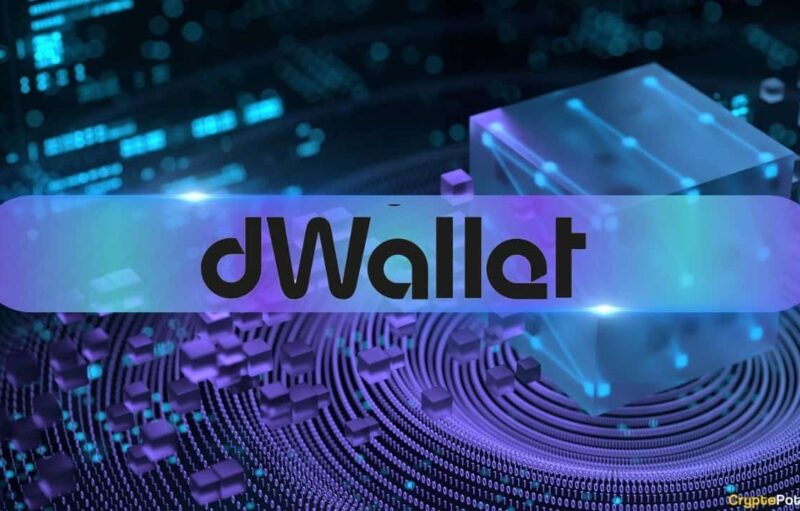Bitcoin is the largest and the most decentralized platform in the world. It is also the highest market cap cryptocurrency in the ecosystem by a large margin. But performing quick and affordable transactions using Bitcoin has long been a problem.
But what if we can make our Bitcoin functional on the Ethereum (ETH) blockchain? Wrapped Bitcoin (WBTC) makes it possible for the BTC holders to access Decentralized Finance (DeFi) projects from the Ethereum network.
In this article, we will discover the detailed guide on the Wrapped BTC and its working, tokens, and much more. Let us look into this Wrapped Bitcoin review now.
Background
There was a creation of a new ERC-20 token project known as the Wrapped Bitcoin by Bitgo, Kyber network, and Ren. It was created in January 2019. Wrapped Bitcoin was launched mainly as a collaborative project between the major protocols in the Defi ecosystem.
The founders of WBTC explained at the time of its launch that the main aim of this platform was to bring more liquidity into the crypto ecosystem. Since the launch of the project in January, it reached worth million dollars in a very short period of time.
Since then the project is now controlled by a Decentralized Autonomous Organization (DAO) called the WBTC DAO.
What is WBTC?
WBTC is a token that represents BTC in the Ethereum blockchain. It is an ERC-20 token. Each WBTC is fully-backed by BTC at a 1:1 ratio. The main purpose of WBTC is to transfer the stability and liquidity of BTC into the Ethereum network.
WBTC brings greater liquidity to the Ethereum ecosystem including decentralized exchanges (DEXs) and financial applications. The majority of trading volume takes place on centralized exchanges with Bitcoin in recent times. Whereas WBTC brings Bitcoin’s liquidity to DEXs and making it possible to use Bitcoin for token trades.
WBTC Token Details
Wrapped tokens are referred to as the digital assets which are backed by the other assets. They are entirely built on the Etherum blockchain. Its value is checked to be the same as its underlying assets with the help of smart contracts. It monitors its price in real-time.
The Wrapped tokens can be used by the platforms built on the Etherum blockchain such as dApps and others. imBTC and Wrapped ETH (WETH) are also some of the other wrapped tokens. These are also backed by the assets and function in the same manner.
The major upgrades and the changes in the protocol are being governed by the governing members of the WBTC DAO. They also decide on the roles assumed by the merchants and the Custodians that manage the platform.
How does WBTC work?
There are 4 systems associated with the wrapped BTC ecosystem which can be listed below:
1) Custodians: The various assets involved in the wrapped token are held by these organizations. In the account of WBTC, The underlying assets are being held by BitGo.
2) Merchants: The distribution of the wrapped tokens are regulated by the merchants. The wrapped tokens can be issued or burned by them.
3) Users: The other financial transactions associated with the wrapped tokens in the Etherum network are held and performed by the users.
4) WBTC DAO Members: They are responsible for governing the custodians, merchants, and users. DAO members also authorize any contract changes along with the addition and removal of custodians.
How are WBTC tokens produced?
The users who want to convert their BTCs into WBTC is the primary step in wrapping tokens. The entire process of minting or burning the WBTC’s is initiated by the merchants. They do it by undertaking the know your client procedures prior to the task.
After the merchant has decided to mint wrapped tokens, they go to custodians (i.e.BitGo). This is in order to take custody of the actual BTC before minting WBTC. Then, custodians provide WBTC to merchants so they can distribute them to the users.
You can trade the WBTC tokens on decentralized exchanges such as Kyber or Uniswap since it is an ERC-20 token. BTC can also be exchanged for the ERC20 token by using ETHfinex, GOPAX, AirSwap, Set Protocol, and other WBTC sellers.
How Do I buy, sell, or redeem WBTC?
The process of buying WBTC is considerably easy. The users who are in need to get in contact with the partner merchants. With the amount of BTC that they are willing to deposit, they are able to get the exact amount of wrapped BTC. The WBTC will be then released to them after verifying the user’s information.
The users can sell the WBTC’s in return for the BTC by sending redemption requests to the merchants. With the amount of wrapped BTC burned, the exact amount of bitcoins will then be transferred and returned to the user.
To unwrap WBTC into BTC, you first need to have WBTC in your CoinList wallet. Once your wallet is funded with WBTC:
- Click “Unwrap” from inside your WBTC wallet.
- Enter the amount of WBTC you wish to swap into BTC
- Click “Confirm Unwrap” to receive BTC directly in your BTC wallet.
WBTC will be debited from your WBTC wallet and you will receive BTC in your BTC wallet. It should be noted that you will have two different wallets. You will not receive BTC in your WBTC wallet.
Use cases Of WBTC
Bitcoin can be utilized in a wide variety of new decentralized use cases, by the WBTC users including on decentralized exchanges (DEXs). It can be used as collateral for stable coins or lending, for payments and flexible smart contracts within the Ethereum ecosystem.
The leading use cases are being powered by some of the important decentralized projects including Kyber Network, Republic Protocol, MakerDAO, Dharma, Airswap, IDEX, Compound, DDEX, Hydro Protocol, Set Protocol, Prycto, RadarRelay, and Gnosis.
The Future
Every Bitcoin will be accounted for on a dashboard displaying addresses and balances. The users will be able to verify on the blockchain each Bitcoin that is held in custody. This can be done by comparing the exact number of Bitcoin stored with the total supply of WBTC in circulation via a blockchain explorer like Etherscan.
This transparency brings a feeling of trustworthiness to the digital currency, It is an important element for any blockchain ecosystem. WBTC will employ the same secure processes that are being developed for the institutional custody
Conclusion
The wrapped BTC provides more BTC holders into the DeFi community. Together, this further helps in developing the Defi ecosystem. The users can benefit from the programmability and reduced transaction fees on Ethereum, and have access to the growing amount of DeFi applications.
The crypto community continues to show rapid growth as a result of the liquidity that the BTC is capable of providing. The wrapped tokens also help in developing better use cases for the crypto.
FAQ’s
- What is Wrapped Bitcoin (WBTC)?
Wrapped Bitcoin (WBTC) is an ERC-20 token backed 1:1 by Bitcoin and held at Bitgo Trust. WBTC brings the liquidity of Bitcoin to the Ethereum ecosystem. The users can wrap and unwrap BTC seamlessly via their CoinList wallet.
- How do I redeem Wrapped Bitcoin (WBTC) for BTC?
To unwrap WBTC into BTC, you first need to have WBTC in your CoinList wallet. Once your wallet is funded with WBTC: Click “Unwrap” from inside your WBTC wallet. Enter the amount of WBTC you wish to swap into BTC. Click “Confirm Unwrap” to receive BTC directly in your BTC wallet.
- How are the WBTC tokens produced?
The users who want to convert their BTCs into WBTC are the primary step in wrapping tokens. After the merchant has decided to mint wrapped tokens, they go to custodians (i.e.BitGo). This is in order to take custody of the actual BTC before minting WBTC. Then, custodians provide WBTC to merchants so they can distribute them to the users.
- What are the use cases of WBTC?
Bitcoin can be utilized in a wide variety of new decentralized use cases, by the WBTC users including on decentralized exchanges (DEXs). It can be used as collateral for stable coins or lending, for payments and flexible smart contracts within the Ethereum ecosystem.
The post appeared first on Coinpedia






